- JST Home
- /
- Strategic Basic Research Programs
- /
 PRESTO
PRESTO- /
- project/
- Dynamics of Cellular Interactions in Multicellular System/
- [Multicellular System] Year Started : 2019
[Multicellular System] Year Started : 2019
Yasutaka Okabe
Cellular communication of the mesothelial tissue boundary
Researcher
Yasutaka Okabe

Associate Professor
Immunology Frontier Research Center
Osaka University
Outline
Body cavities (peritoneal, pleural, and pericardial) are spaces that are lined by a single layer of mesothelial cells. Immune cells such as B and T lymphocytes are constantly recruited into the body cavities and migrate out into blood circulation. However, how immune cells pass through mesothelial layer remains to be determined. In this project, I will investigate the role of novel mesothelial cells that construct the mesothelial portal between body cavity and visceral organ.
Shinya Oki
Elucidation of multicelluar system with spatial recording technology
Researcher
Shinya Oki

Associate Professor
Graduate School of Medicine
Kyoto University
Outline
To obtain high quality gene expression profiles, one of the most critical steps is to isolate cells in a region of interest (ROI) with high spatial resolution. However, the resolution of laser microdissection system is generally limited around 100 μm in size, whereas FACS- or single cell-based analyses are unable to annotate original spatial information due to enzymatic tissue dissociation. I will establish a spatial genomics method coupled with photo-isolation chemistry, which allows to isolate gene expression and epigenomic profiles only from photo-irradiated ROIs out of whole tissues with 10 μm resolution.
Yusuke Oguchi
Development of genome-wide and single-molecule spatial transcriptome analysis elucidating cell-to-cell interactions
Researcher
Yusuke Oguchi
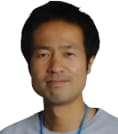
PRESTO Researcher
Japan Science and Technology Agency
Outline
Spatial transcriptomes, such as seqFISH+ and Slide-seq, are attracting attention as methodologies that provide information lacking in conventional transcriptomes. However, existing spatial transcriptome analyses involve a trade-off between the number of target genes (genome-wide or not) and spatial resolution (single-molecule resolution or not). In this study, I will develop a spatial transcriptome analysis that achieves genome-wide detection and single-molecule spatial resolution simultaneously. Furthermore, using this system, I aim to elucidate details of the spatial development of genes associated with cell-to-cell interactions.
Hiroyasu Kidoya
Spatio-temporal analysis by in vivo imaging of the dynamics of vascular morphogenesis
Researcher
Hiroyasu Kidoya

Professor
Graduate School of Medical Science
Unuversity of Fukui
Outline
A diversity of vascularization patterns may arise from variations caused by unknown environmental factors, in addition to the generally considered gene expression programs. It is clear that random sprouting of blood vessels and chaotic expansion of the vascular area can be observed by in vivo imaging. In this project, we will analyze interactions between vascular endothelial cells and other cells in the microenvironment in a spatio-temporal manner, and investigate the complex system that creates diversity of vascularization patterns.
Kouki Tsuyuzaki
Spatiotemporal analysis of cell-cell interaction using tensor decomposition
Researcher
Kouki Tsuyuzaki
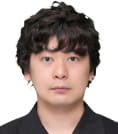
Special Postdoctoral Researchers
Center for Biosystems Dynamics Research
RIKEN
Outline
In this study, the information “in which combination of cells, when, where, and by what molecular networks, the cell-cell interaction (CCI) is constructed” is expressed in a data structure called tensor, and an algorithm called tensor decomposition is applied to extract the representative spatiotemporal CCI patterns. I will also work on the development of a recommendation system that uses tensor flexibility to simultaneously analyze other types of single-cell omics and assign relevant information to other researchers’ data.
Hideru Togashi
Identification of mechanisms that regulate asymmetric distribution of adhesion molecules during mosaic cellular patterning.
Researcher
Hideru Togashi
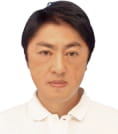
Assistant Professor
Graduate School of Medicine
Kobe University
Outline
The mosaic patterns of the sensory epithelia are important for their functions, and the mosaic are established by heterophilic interaction of different nectins. The continuous intercalation of two types of cells is required for the mosaic cellular patterning. Live imaging analysis reveals that the cellular intercalation is accompanied by transient asymmetric distribution of adhesion molecules at junctions during mosaic pattern formation using MDCK cells as a model. In this project, I propose to identify the mechanisms that regulate the asymmetiric distribution of adhesion molecules during mosaic cellular pattern formation using combination of experimental and theoritical approach.
Yu Toyoshima
Whole brain activity measurement and gene expression analysis of neurons in Caenorhabditis elegans
Researcher
Yu Toyoshima
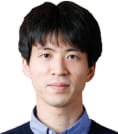
Associate Professor
Graduate School of Science
The University of Tokyo
Outline
To measure whole brain neural activity of freely behaving worms, automatic tracking stage will be integrated with confocal microscope and a tracking method suitable for neurons in volumetric movies will be developed. Gene expression patterns in each neuron will be used for optimizing annotation process in which the cells in the movies are identified and labeled with the names of respective neurons. Measured neural activity will be analyzed from the viewpoint of neural circuits.
Masakazu Hashimoto
Understanding the mechanisms of epiblast formation and its application to the regenerative medicine
Researcher
Masakazu Hashimoto
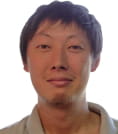
Associate Professor
Graduate School of Frontier Biosciences
Osaka University
Outline
Mouse epiblast is the origin of all somatic cells and germ cells, but the number of epiblast cells is quite small, approximately ten at most. Therefore, all the cells in epiblast should have full pluripotency to proceed the development. Recently we uncovered that cell competition eliminates unfit cells to establish the uniformly pluripotent epiblast. The aim of this study is to understand the mechanism of the establishment of epiblast, especially focusing on the mechanisms of cell-cell interaction to recognize the unfit cells in the mouse forming epiblast. I will also challenge to apply this knowledge of basic science to the regenerative medicine field.
Tsuyoshi Hirashima
Curvature-dependent cellular mechanoresponse for branching morphogenesis
Researcher
Tsuyoshi Hirashima
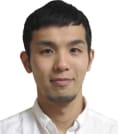
Principal Investigator
Mechanobiology Institute
National University of Singapore
Outline
I will study a unique multicellular function that cells control generating force in response to curvature of their scaffolds by combining interdisciplinary methods such as microfabrication, imaging, and force measurement. With the experimental data, I will build a mathematical model and clarify multicellular dynamic system that realizes robust branching morphogenesis. This project is planned to be undertaken in active cooperation with researchers beyond disciplines.
Hiroaki Mano
Cell-cell communication mechanism underlying the rapid leaf movement of the sensitive plant Mimosa pudica
Researcher
Hiroaki Mano

PRESTO Researcher
Japan Science and Technology Agency
Outline
The sensitive plant Mimosa pudica folds its leaves very rapidly in response to touch. This seismonastic movement requires not only the rapid shrinkage of individual motor cells, but also rapid cell-cell communication to synchronize the action of thousands of cells. By using a transgenic technique that we developed for M. pudica, now I am tackling the molecular mechanisms underlying the fast synchronization of the cells and the dynamic leaf movement in this peculiar plant.
Yusuke Mii
Dynamic establishment of planar cell polarity directed by Wnt
Researcher
Yusuke Mii
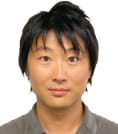
Assistant Professor
National Institute for Basic Biology
National Institutes of Natural Sciences
Outline
Planer cell polarity (PCP) is directional information of cells across the tissue plain, widely conserved among multicellular animals. A family of secreted signaling proteins, Wnt has been shown to direct PCP. However, mechanisms how Wnt directs PCP remain poorly understood. In this project, I will study the mechanisms at molecular and cellular levels, based on intensive live-imaging of Xenopus embryos. Furthermore, I will try to reconstitute PCP in cultured cells through understanding essential mechanisms of PCP.
Shunsuke Yaguchi
Mechanisms of external stimuli-dependent digestive tract formation
Researcher
Shunsuke Yaguchi

Associate Professor
Faculy of Life and Environmental Sciences
University of Tsukuba
Outline
It has not been well studied how external stimuli can affect the development of animals in the process of forming a normal functioning body. In this study, I aim to discover the pathway of gastrointestinal tract formation in external stimulus-dependent manner and to elucidate its molecular mechanism. Especially, I use sea urchin larvae, which have been model organisms in developmental biology for decades, and focus on how they interpret external stimuli and reflect the information to forming gut in an unstable marine environment.
Satoko Yoshida
Gene regulatory networks in plant-to-plant interactions
Researcher
Satoko Yoshida
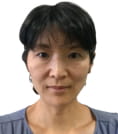
Professor
Science and Technology
Nara Institute of Science and Technology
Outline
Parasitic plants invade the host plant tissues and change its own cell fate while being affected by host plant cells to establish parasitism. In this study, we will analyze the spatiotemporal gene expression in haustoria of the model parasitic plant Phtheirospermum japonicum, and performed gene co-expression network analysis together with host plant genes to reveal the genetic modules for plant parasitism and the regulatory host factors.













